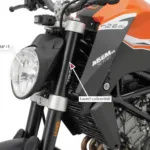Your obd2 scanner won’t connect? This is a frustrating but surprisingly common problem. In this guide, we’ll explore the reasons why your OBD2 scanner might be failing to connect and provide you with effective solutions to get you back on track diagnosing your vehicle’s issues.
Common Reasons Why Your OBD2 Scanner Won’t Connect
There are several reasons why your OBD2 scanner might refuse to connect. Identifying the root cause is the first step to resolving the issue. Here are some of the most common culprits:
- Compatibility Issues: Not all OBD2 scanners are compatible with all vehicles. Ensure your scanner supports your car’s make, model, and year. Some older vehicles, especially those manufactured before 1996, might not be OBD2 compliant.
- Faulty OBD2 Port: The OBD2 port itself could be damaged or have loose connections. Check for bent pins, debris, or corrosion within the port.
- Blown Fuse: A blown fuse related to the OBD2 port or the car’s diagnostic system can prevent the scanner from connecting. Consult your car’s owner manual to locate the relevant fuse and check if it needs replacing.
- Connection Problems: Loose or damaged cables can interrupt communication between the scanner and the vehicle. Check both ends of the cable for any visible damage.
- Software Glitches: Outdated or corrupted software in the scanner can cause connection problems. Check for firmware updates for your scanner model.
- Incorrect OBD2 Protocol: Your scanner might be trying to communicate using an incorrect OBD2 protocol. Some scanners have settings to manually select the correct protocol.
- Car’s Ignition: In some cases, the car’s ignition needs to be in the “on” position (without the engine running) for the OBD2 port to be active.
 Mechanic Inspecting OBD2 Port for Damage
Mechanic Inspecting OBD2 Port for Damage
Troubleshooting Steps: What To Do When Your OBD2 Scanner Won’t Connect
If your obd2 scanner won’t connect, don’t panic! Here’s a step-by-step guide to help you diagnose and fix the problem:
-
Check Compatibility: Verify that your obd2 scanner that can reset codes is compatible with your car’s make, model, and year.
-
Inspect the OBD2 Port: Carefully examine the OBD2 port for any physical damage, loose connections, or debris.
-
Check the Fuse: Refer to your car’s owner manual and check the fuse related to the OBD2 port or the diagnostic system.
-
Test the Cable: Try using a different OBD2 cable to rule out cable issues.
-
Check the Car’s Ignition: Ensure the car’s ignition is switched to the “on” position without starting the engine.
-
Restart Everything: Sometimes, a simple restart can resolve software glitches. Turn off the ignition, disconnect the scanner, and then try again.
-
Update Scanner Software: Check the manufacturer’s website for any available firmware updates for your scanner.
Still Having Trouble?
If you’ve tried all the above steps and your obd2 scanner won’t connect, it might be time to consult a professional mechanic. They have the expertise and tools to diagnose more complex electrical issues.
Conclusion
Troubleshooting an OBD2 scanner that won’t connect can be a straightforward process. By following these steps, you can often identify and resolve the issue yourself, saving you time and money. Remember to prioritize safety and consult a professional if needed. Your obd2 scanner is a valuable tool for understanding and maintaining your vehicle’s health, so getting it connected is crucial.
FAQ
-
Can I use any OBD2 scanner on any car? No, compatibility varies. Check your scanner’s documentation for supported vehicle models.
-
Where is the OBD2 port located? It’s typically located under the dashboard, near the steering wheel.
-
What if I replace the fuse and it blows again immediately? This indicates a deeper electrical problem; consult a mechanic.
-
Can a low car battery prevent the scanner from connecting? While less common, a severely depleted battery can sometimes cause connection issues.
-
What does it mean if my scanner connects but can’t read any data? This could be due to several issues, including a faulty scanner, incorrect OBD2 protocol, or a problem with the car’s computer.

